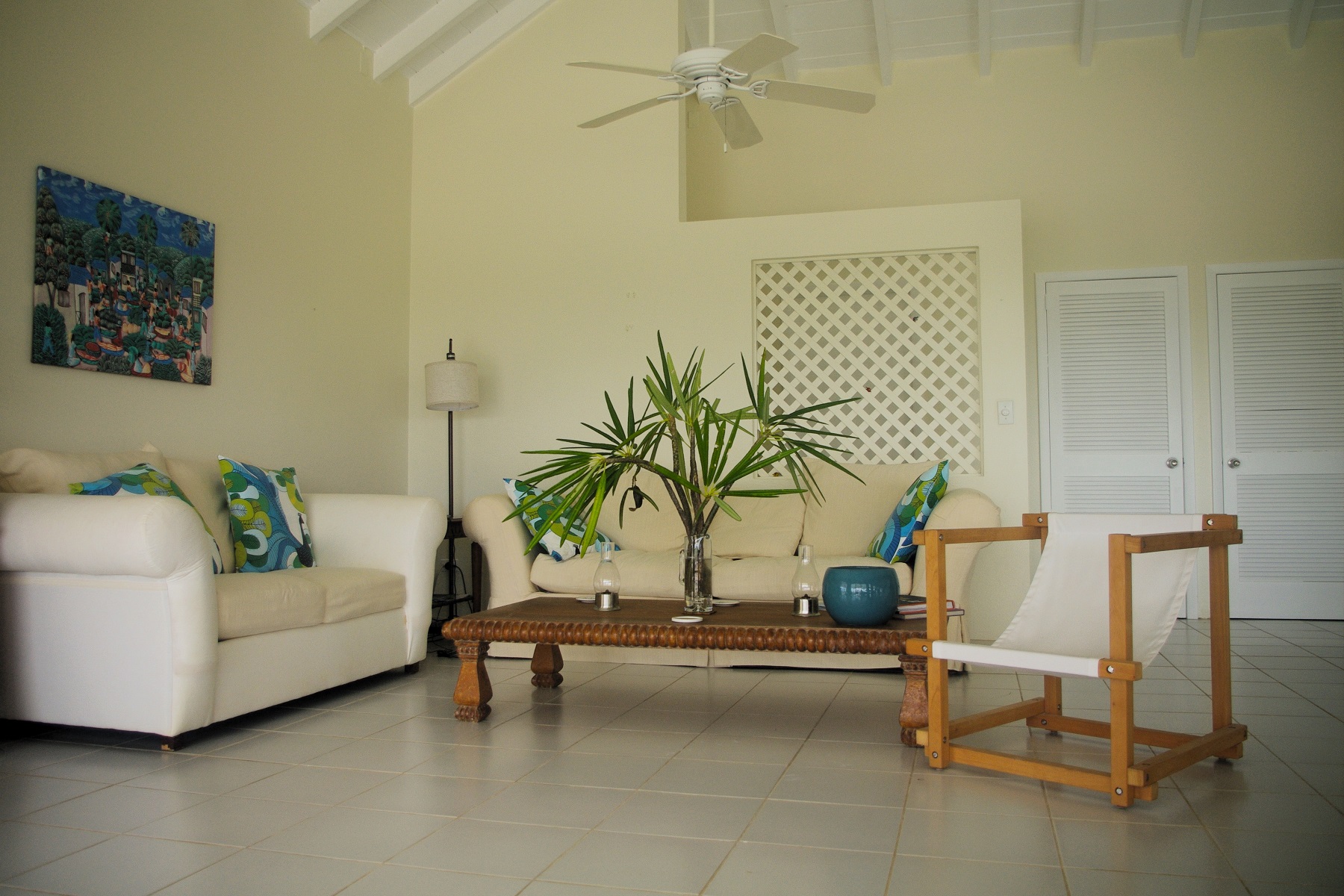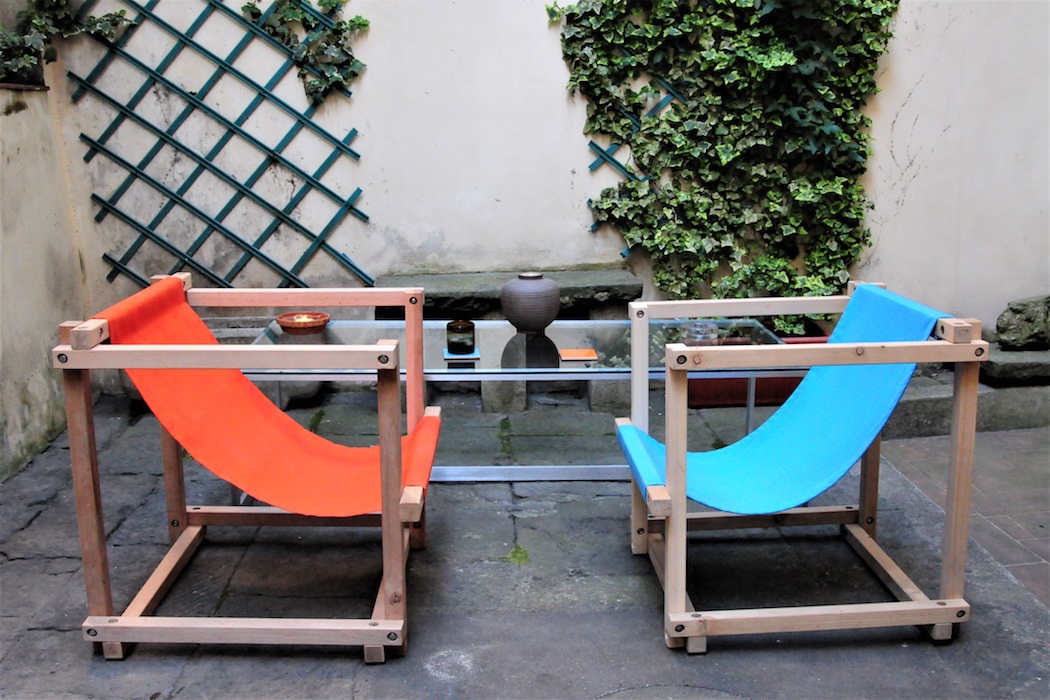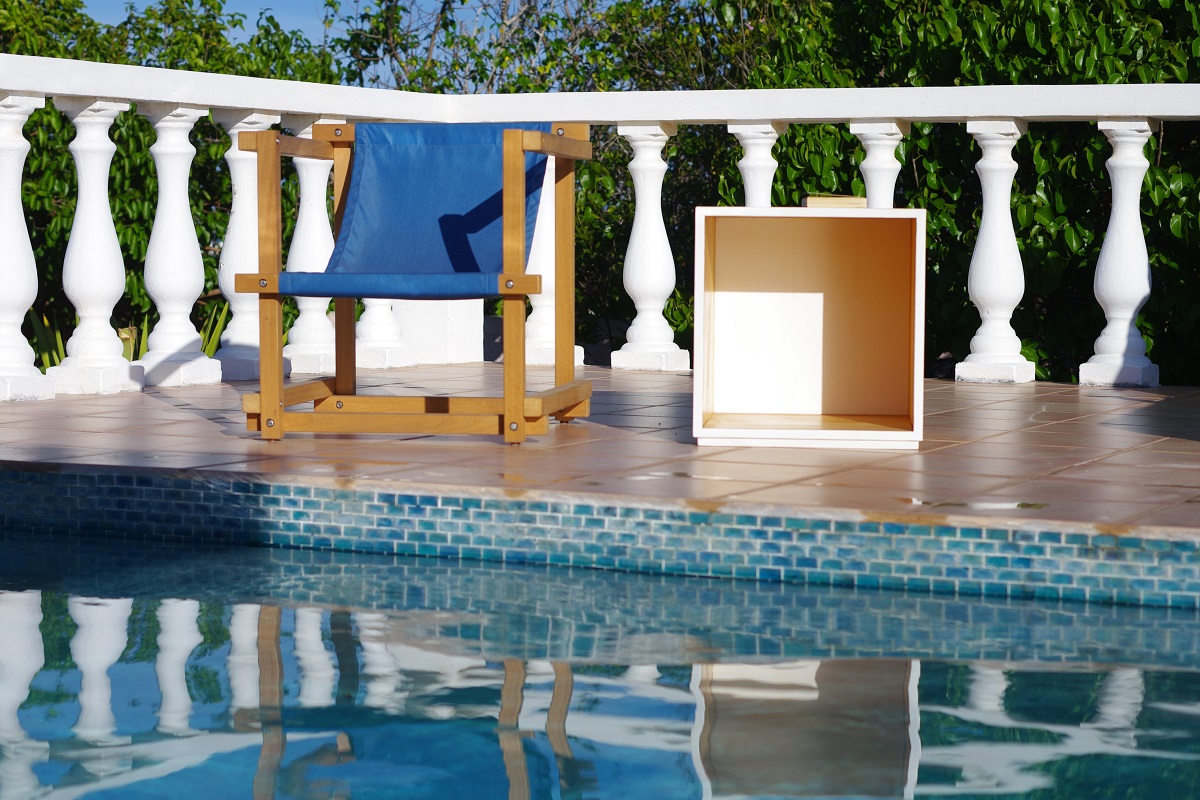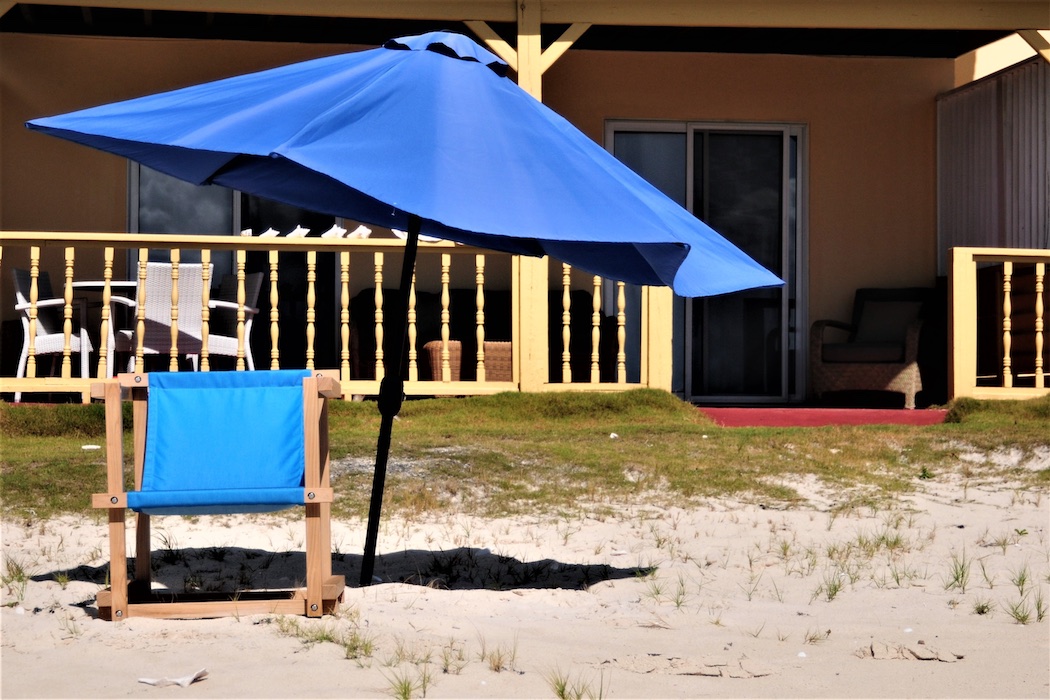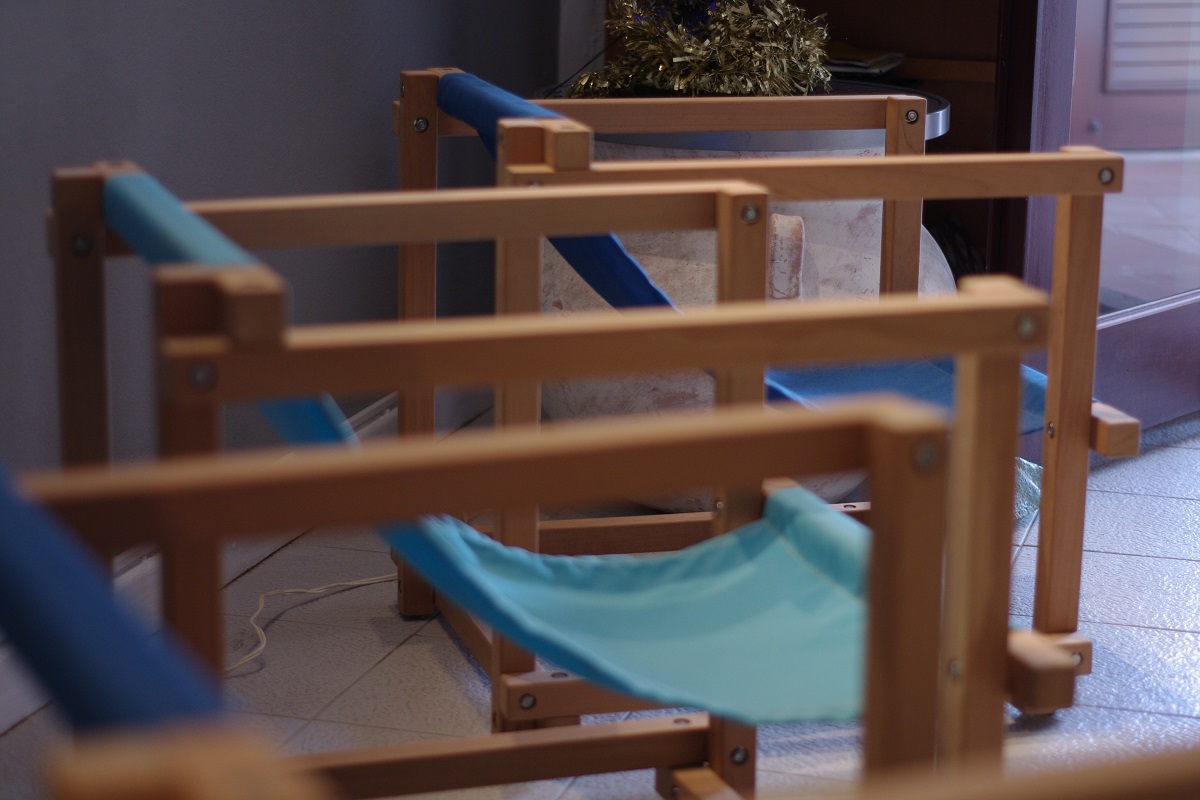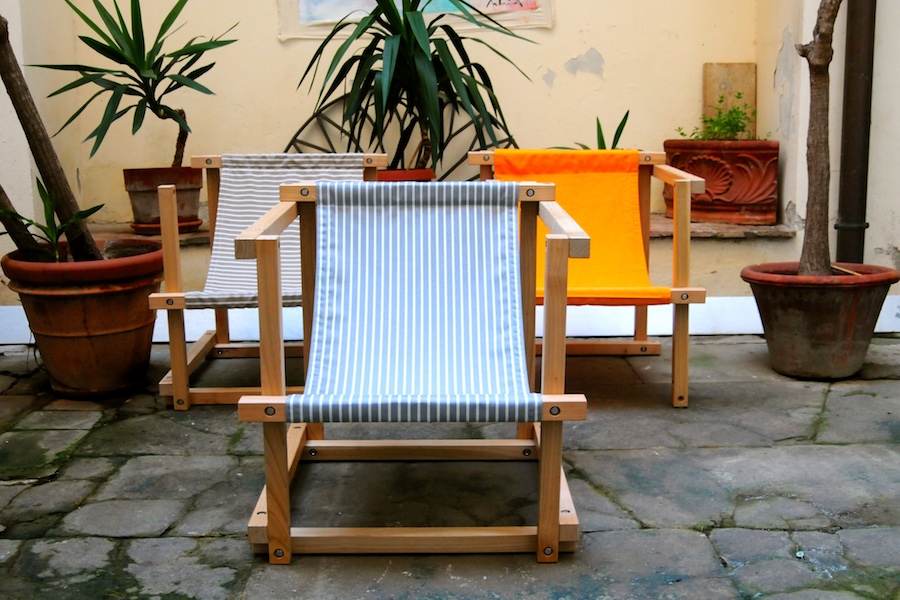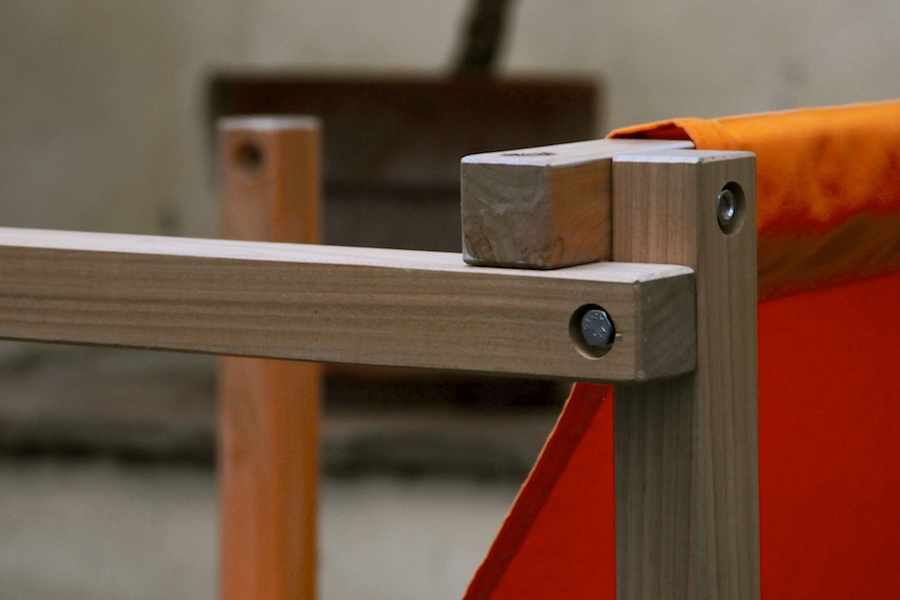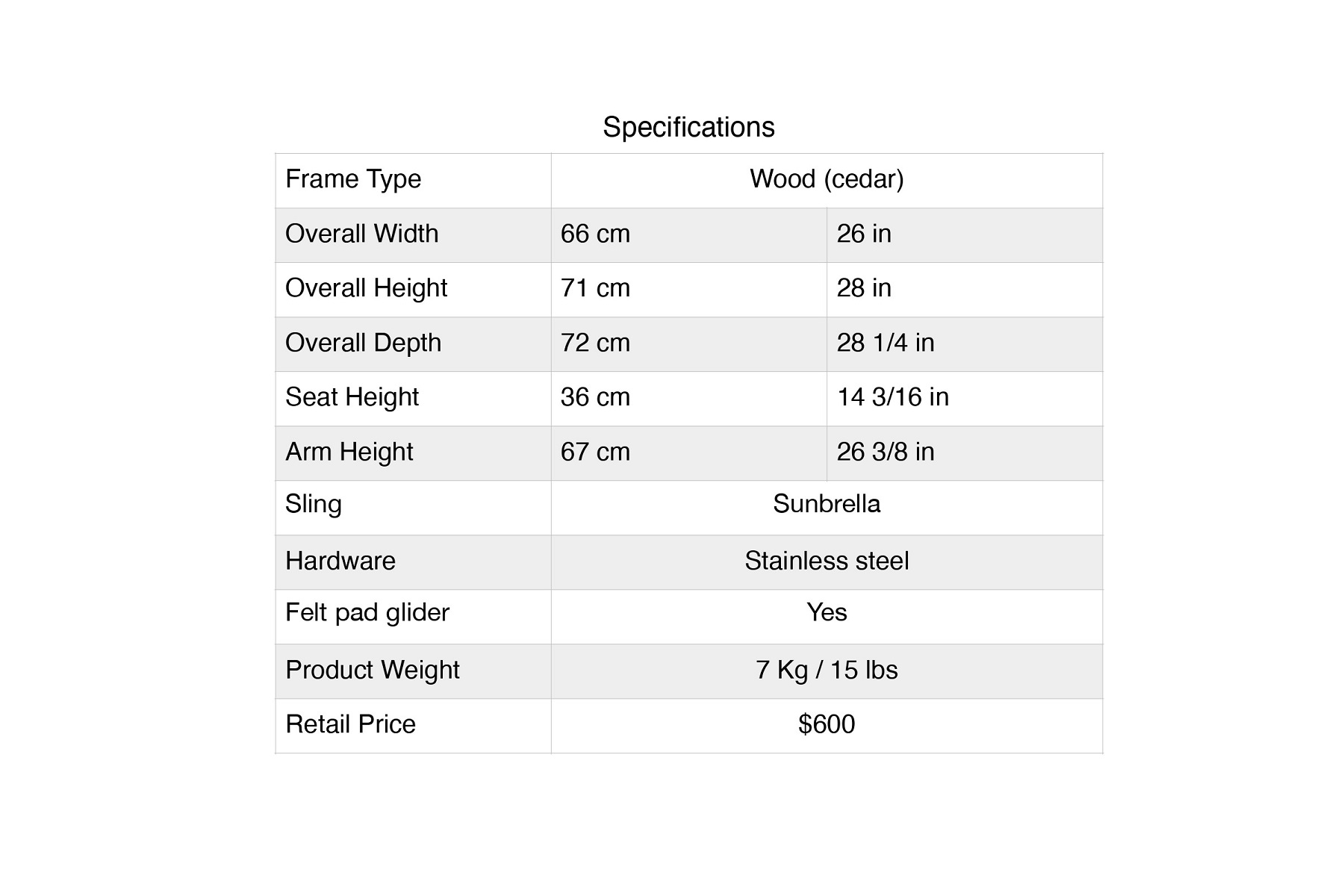QUBE
The Old Factory’s primary line takes simplicity to the limit, using the perfectly symmetrical shape of a cube as starting point to create a beautiful and functional family of furniture. The Qube Accent Chair places you in the middle of the cube by lowering the top front bar to the perfect seating level, effectively opening up a capsule of vital space where you can recline or sit up at your comfort.
Qube is all about proportions and visuals, with the performance sling hanging just high enough for you to use the side panels as arm rests while still being able to slouch into full casualness. Carefully selected materials add to the blend of rustic flair with sophistication, with the square-cut logs of local hardwood, the partly visible stainless steel hardware, and the criss-crossing pattern of the assembling parts emphasising the rough-and-ready tone.
And yet, while seemingly effortless, Qube is full of understated details specifically conceived to improve the quality and seating experience of each product, from blunted edges on all sides of its 12 beams and poles, to recessed bolts and fasteners, slide-in fitting system for the sling, and felt pads under all four feet.
Qube is inspired by Sol LeWitt’s minimalist art, in particular his series of incomplete open cubes, which he first exhibited in 1974. LeWitt’s exploration of all the potential ways of not completing a cube produce a total of 122 versions of something that makes direct reference to the perfect geometrical shape without actually being one. A cube consists of 12 linking parts, but all of LeWitt’s 122 variations consist of anywhere between 3 and 11 parts. Nevertheless, by nature of being close together, ie next to each other in 12 rows, one unfinished shape blends into the next, ultimately creating the effect of some finished cubes, depending on your perspective.
We take the ideal cube and corrupt it, open the front, raise the back, and create a capsule of vital space for you to sit in. It looks like a cube, it feels like a cube, yet it’s not a perfect cube – it’s just a perfect chair!
Regardless of the artistic merit of LeWitt’s tedious exercise in seriality, we have borrowed certain ideas vividly brought forward by this work. One of them is the balance – the internal perfection – of the ideal cube. Another one is the interesting question of when is a cube, even an unfinished one, no longer a cube. LeWitt gives us a very graphic step-by-step answer of what lies between cube and no-cube – 122 shades of grey, so to speak, between black and white. But that is only one way of looking at that question. What about a 12-part cube with the top front bar substantially lowered, is that still a cube? And what if we raise the backrest (comfort over concept, every time)? It still looks like a cube to the naked eye. It still feels like a cube when you sit inside it. But is Qube a cube?
The answer is obvious: not only is Qube not a cube, the fact is neither our accent chair nor LeWitt’s 122 sculptures ever even aspire to be one – in the best of cases, once plucked out of the drawing board and fleshed out into a three-dimensional object, Qube could only ever resemble the outline of a cube, which has six faces, even if on paper they are all see-through.
The transition from two- to three-dimensionality, from cube to Qube, so to speak, brings the essential quality of the design to the fore, namely a lightness to what in principle should be a solid, and by extension, heavy mass. But Qube Accent Chair is anything but heavy and solid, it’s radiant rather than dark, spacious rather than constrained, it’s airy and fresh, rather like a Gothic cathedral, or further still, like the well-preserved remains of one, say Tintern Abbey on the River Wye or the Abazzia di San Galgano in Tuscany.
By focusing merely on the outline of the polygon, Qube manages to evoke the perfect shape and symmetry of the cube, without committing to its more cumbersome features. Most importantly, the transition from cube to Qube highlights one all-important fact: for all the perfection of the ideal cube, if it is to be rendered fit for every day use its concept needs to be revisited, tweaked, corrupted you might say, with the stuff of life. LeWitt’s analysis of the essence of the cube has opened the doors to him of every museum of modern art in the world, from the Met to Palazzo Strozzi. Uncannily, the concept is fertile enough to provide inspiration for PLUs (people like us, in case you’re not up with the lingo), in a constant quest for secularising art and bringing it to life. That’s exactly what we hope to have achieved with this line.
For the full spec sheet of the Qube Accent Chair click on the table below.


